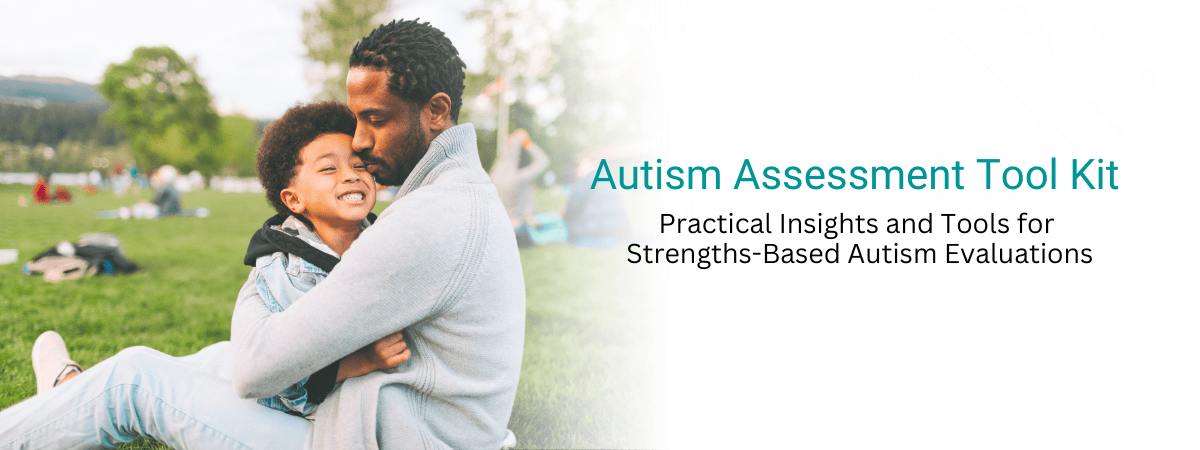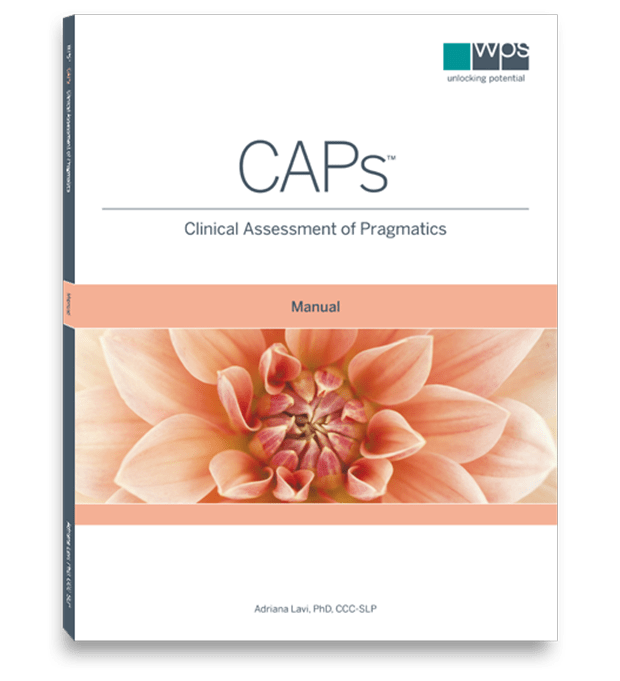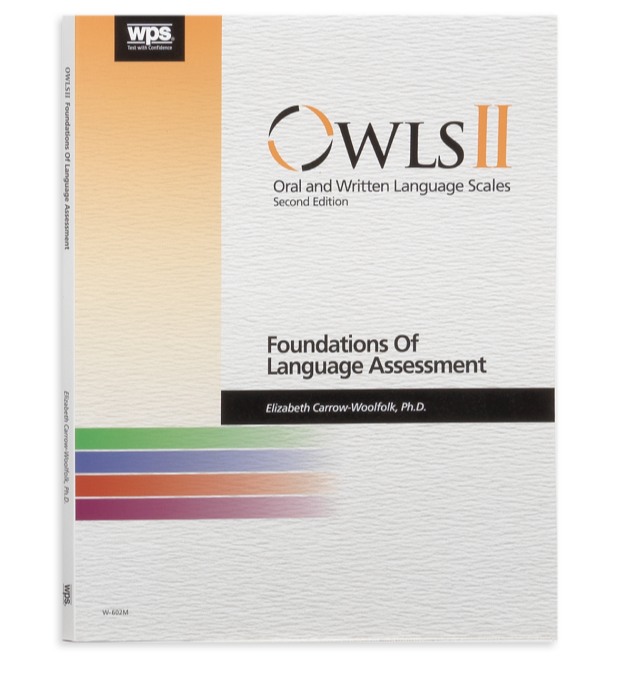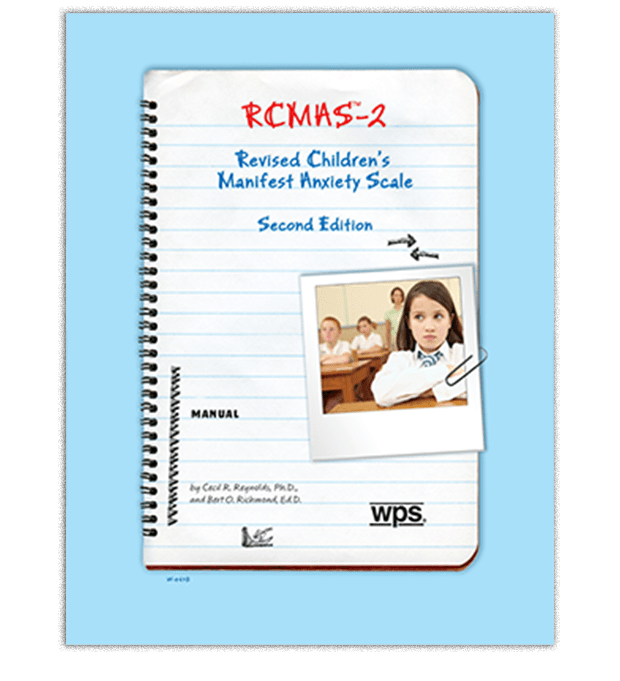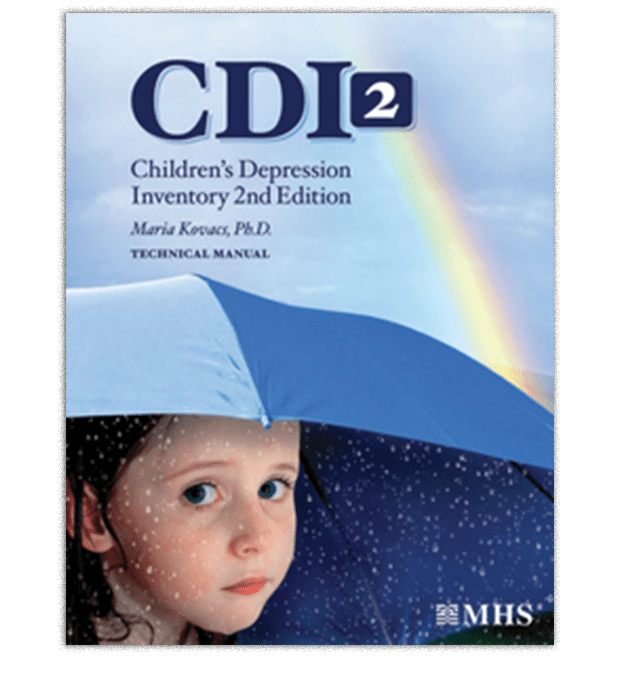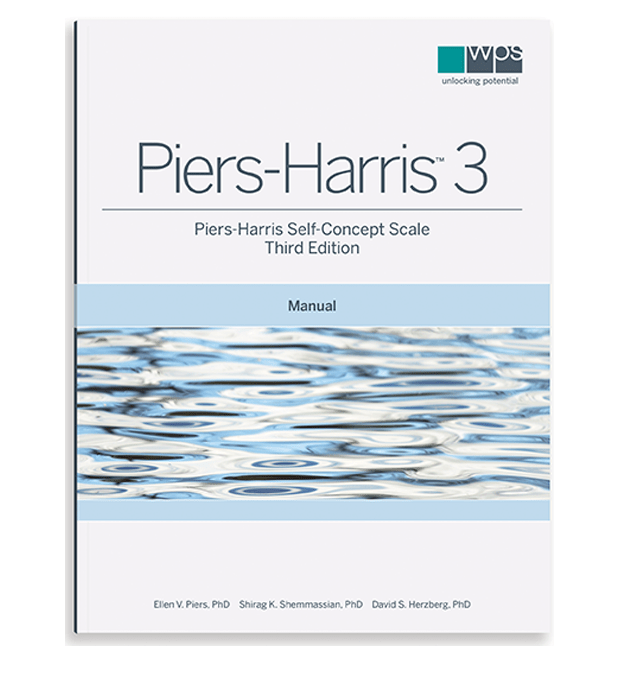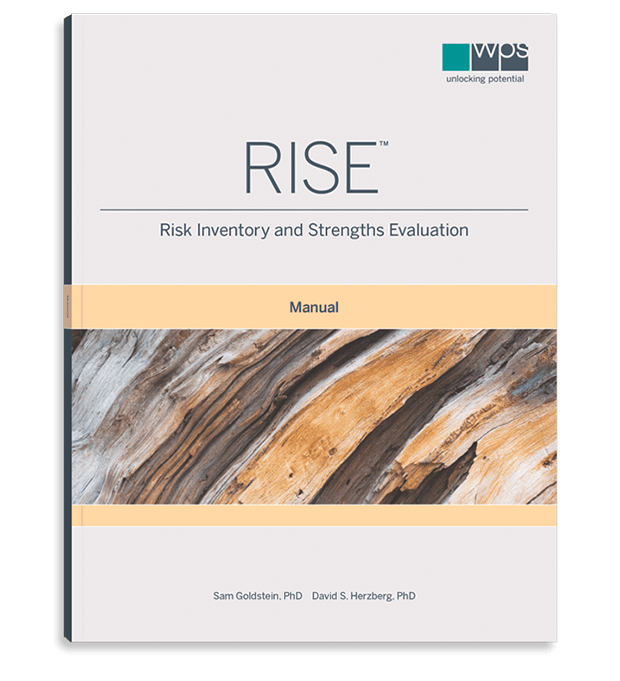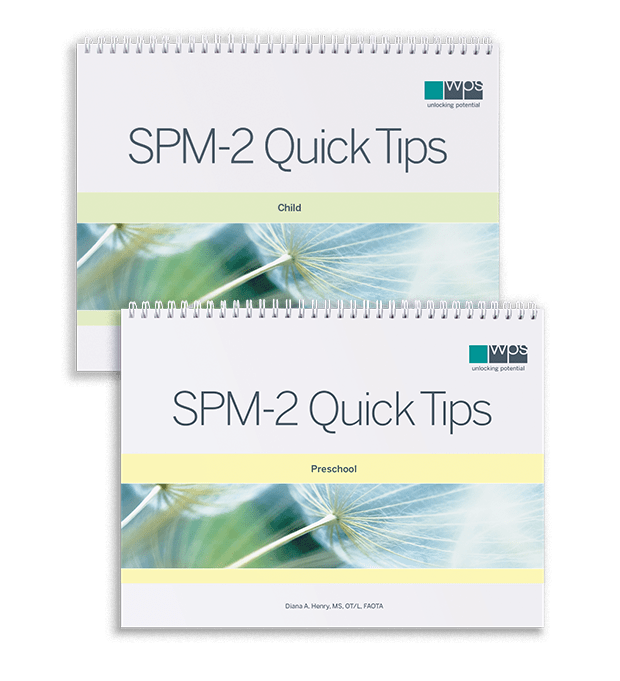WPS Autism Assessment Tool Kit
The Journey Toward a Strengths-Based Approach
The criteria listed in The Diagnostic and Statistical Manual of Mental Disorders, Fifth Edition Text Revision (DSM-5-TR) and International Classification of Diseases, 11th Revision (ICD-11) refer to the core characteristics of autism as persistent deficits that cause pervasive, clinically significant impairment in multiple settings.
For that reason, many practitioners have been trained to scout out what an individual cannot do or can do only with great effort. Identifying these deficit-based core characteristics and receiving a diagnosis is essential to qualify for services in many places. Identifying deficits can also help practitioners understand where a person needs support and where therapeutics might make life easier.
But deficits don’t tell the whole story. There’s a growing body of research suggesting that a strength-based approach has important benefits. Research shows that when autistic individuals know their personal strengths and use them, their subjective sense of well-being and mental health improve (Taylor et al., 2023).
In a multi-year study that surveyed parents of autistic teens who participated in a Science, Technology, Engineering, Arts, and Mathematics (STEAM) program that identified and honored strengths, parents reported that their children’s enthusiasm, motivation, and well-being all improved. One parent commented that succeeding in a strength-focused environment “made him realize that he can do great things while being himself, and that he doesn’t need to be like other people, because he is great on his own” (Lee et al., 2024).
Holistic Autism Evaluation
An accurate and affirming autism evaluation considers the whole person in context. In addition to considering the core characteristics of autism, evaluators often gather information about these areas:
In some instances, autism evaluations also include genetic, health, and immunology screenings (Frye et al., 2022).
A Multidisciplinary Team
Understanding the fullness of a person’s lived experience takes a team of dedicated professionals. Comprehensive autism evaluations are best completed by a team of educators and clinicians, often including these professionals:
Numerous researchers have recommended a multidisciplinary team to conduct autism evaluations, citing benefits such as these:
- roader understanding of the needs of autistic children, adults, and their families
- the ability to identify and address co-occurring conditions
- integration of multiple sources of data and multiple perspectives on the individual at the heart of the evaluation
- coordination of care and support across education, health care, and community settings (Fulceri et al., 2023).
This kind of exploration takes time and expertise, but it can lead to a richer understanding and more effective planning. It can introduce us to the extraordinary potential in every individual.
Assessing Core Characteristics
Every person on the planet is unique. Our gifts and shortcomings, our personalities and passions, and our life experiences all vary. That’s why curiosity is an excellent starting place in an autism evaluation. It prompts us to ask about what engages, motivates, and frustrates the people we serve. Curiosity moves us to discover as much as we can about people’s goals, priorities, and backgrounds.
Autism assessment should reflect the fullness of a person’s lived experience, whether a person has lived 2 years or 62 years. In creating this Autism Assessment Tool Kit, we endeavor to present research-supported assessment strategies that focus on individual strengths, assets, and goals, as well as the core characteristics of autism as they are articulated in diagnostic manuals. We hope you’ll find the information useful in planning holistic, neurodiversity-affirming autism evaluations.
Repetitive Behaviors
The DSM 5-TR and ICD-11 list repetitive motor movements, also referred to as “stimming,” as one of the key indicators of autism. For that reason, practitioners gather information about repetitive behaviors as part of a holistic autism evaluation. Stimming behaviors vary widely. Some people tap or flap their hands. Some people use fidgets. Some people have much more complex movements like pacing or dancing.
Stimming can sometimes interfere with well-being or daily functioning. For example, it may delay the process of learning adaptive behaviors—the daily skills we use to interact and function at home, school, and in the community (Casula et al., 2024). And according to at least one analysis, approximately 42% of autistic individuals use self-injurious behaviors as a coping mechanism (Steenfeldt-Kristensen et al., 2020).
Social Response
Depending on the nature of the movements and the context in which they occur, repetitive behaviors may have a negative impact on the social lives of autistic individuals. For example, repetitive behaviors may draw unwanted attention and concern in neurotypical settings. They may even spur hurtful comments or bullying.
In one study, 72% of autistic people said they had been told to stop stimming or to change their stimming behaviors because it interfered with learning, raised the risk of bullying, or distracted other people (Morris et al., 2025). When a negative impact arises because of a lack of empathy or understanding, an appropriate goal might be educating the people around the autistic individual, rather than asking an autistic person to extinguish a behavior.
In an affirming evaluation, clinicians and educators avoid pathologizing stimming behaviors that aren’t harmful. Stigmatizing movement may lead autistic individuals to camouflage or self-censor their stimming behaviors. Trying to “fix” stimming movements may ultimately damage self-esteem and self-efficacy, experts say (McCormack et al., 2023).
Instead, it may be more useful to build self-acceptance, to educate neurotypical people in workplaces and classrooms about stimming, and to explore the therapeutic potential in “the many appearances of movement, which enable autistic people to reduce distraction, sensory overwhelm, body confusion, and emotional distress” (Petty & Ellis, 2024).
While it's important not to minimize risks, it's also important to recognize that for some autistic individuals, specific repetitive behaviors can be meaningful and productive.
The Benefits of Stimming
In a 2024 study, researchers reviewed 23 blogs written by autistic authors to gain a better understanding of the ways repetitive movements functioned in their daily lives. The bloggers said stimming offered benefits like these:
What people “get” from stimming depends on the individual. For example, in another survey of autistic individuals, people described this stimming benefit: It can build a connection between autistic individuals. Participants said that when they saw someone stimming, they understood how the person was probably feeling (Morris et al., 2025).
)
Special Interests
Having intense, focused interests is considered a core characteristic of autism. To reach a diagnostic threshold, special interests must cause “clinically significant impairment” in social, occupational, or other areas of daily functioning. When interests lead to impairment, it’s important to identify ways to support autistic people and their families in achieving the goals they set.
For many autistic individuals, casting special interests in a negative light may not feel supportive—or even accurate. Framing focused interests as a deficit doesn’t accurately account for the many valid purposes such interests serve and doesn’t capture the happiness people derive from pursuing them.
Increasingly, researchers are encouraging a more positive view of focused interests. In a 2023 article published in Frontiers in Psychiatry, researchers Sara Ellen O’Neill Woods and Annette Estes wrote, “Although the DSM-5 views ‘restricted interests’ as deficits, clinicians can take a more wholistic view by identifying clients' interests and considering the potential opportunities they offer” (Woods & Estes, 2023).
Benefits of Focused Interests
Having passionate interests benefits autistic children and adults in many ways. In studies, autistic individuals have said their interests help them:
- connect with friends who have similar interests;
- decrease stress or recover from sensory overload;
- pursue mastery of a subject;
- work toward vocational or academic goals;
- expand vocabulary;
- build executive functioning skills;
- find contentment in solitude; and
- experience enjoyment.
Many autistic individuals engage in their interests with a level of absorption so intense it can cause them to lose track of time and the world around them. The term “hyperfocus” is generally used to describe that state of intense absorption, but some people prefer to call it a state of “flow.”
Both flow and hyperfocus are associated with these outcomes:
Researchers who interviewed autistic individuals about the function of their interests said the interests also acted as a “social compass” and a “protective boundary” in social encounters (Lizon et al., 2024).
For that reason, it’s important to choose assessment tools and strategies that will allow you to identify focused interests and leverage them in setting goals and planning interventions. Autism researcher Helen Tager-Flusberg, PhD spoke of the power of intense interests in a SPARK for Autism webinar in 2022, saying, “We know that we can engage the brain more—as well as the heart—if we meet the child where their interests and passions lie” (49:20).
|
Sex and Gender Differences Researchers have found that autistic girls and women usually have fewer special interests than autistic boys and men (Edwards et al., 2024). Studies also show that girls’ focused interests tend to be considered more socially acceptable (Simcoe et al., 2023). Researchers say these factors could make it harder to identify autism in girls and women. |
Read more about the special interests of autistic girls and women here.
Social Communication and Interaction
Social communication and social interaction differences are core autism traits. The DSM-5-TR diagnostic criteria describe autism as encompassing deficits in these areas, among others:
Cultures, trauma histories, and individual personalities can shape social behaviors in ways that make differences more pronounced.
To reach a diagnostic threshold, social communication and interaction differences must cause “clinically significant impairment” in multiple functional areas. It’s important to recognize, however, that the degree to which autistic people find their social communication style limiting varies.
Some autistic individuals actively seek out opportunities for social engagement at work, at school, in interest groups, and online. Some prefer one or two reliable friendships. Others express a preference for solitude (Chan et al. 2023) or are limited in their interactions by other communication difficulties.
A person’s environment may also have something to do with how much impairment arises from a social communication difference. In fact, some researchers say there’s a “double empathy” problem in interactions between neurotypical and autistic individuals, “with both parties equally contributing to poor outcomes” (Jones et al., 2023).
Some autistic individuals and advocates see differences in social communication and interaction as part of a natural variation in human social behavior.
The Best Tools for Each Situation
Assessments don’t identify autism. Professionals use validated screeners and assessments as a structured means of gathering in-depth information. Interviews, observations, rating scales, and other tools can help you clarify the picture—guided always by the concerns of the client and their family and your own professional judgment.
In addition to identifying the core characteristics of autism, many of the assessments in this section can be useful to help you discover how autism may be affecting an individual’s ability to function well in different areas of their lives. Many validated autism assessments also provide information about an individual’s personal assets, strengths, and interests.
Here are a few trusted tools to consider:
*The ADI-R can be used as a companion instrument to ADOS-2, adding a parent interview to review early developmental history and current concerns.
Assessing Adaptive Behavior
Adaptive behavior refers to the everyday skills we use to function independently in different areas of our lives. In holistic autism evaluations, measuring adaptive behavior can help practitioners determine how autism and other co-occurring conditions may be affecting a person’s ability to function at home, at work, at school, and in the community. Adaptive functioning varies widely among autistic individuals.
Adaptive behavior instruments typically assess these skill areas:
Autistic traits can affect a person’s ability to function independently—but language, communication skills, other health conditions, and intellectual abilities can also affect adaptive behavior (Failla et al., 2024). Formally assessing adaptive behavior is one step you can take toward understanding the complex relationships between these conditions and their effects on daily living skills.
The Role of Age
Adaptive behaviors are age-dependent: What we expect a person to be able to do depends on their age. Sometimes, the development of adaptive skills can be delayed in autistic people; global developmental delays are an initial pathway sign to needing an autism evaluation. In one study of very young children, some of whom were autistic and some who had autistic family members, researchers found that more intense and more unusual special interests were associated with lower scores on a measure of adaptive behavior (Burrows et al., 2021).
Assessing adaptive behavior can also help practitioners with transition planning, since difficulties in these areas can last into adulthood. Research has shown that adaptive behavior is one of the factors that influences how well autistic young adults transition into post-secondary education, employment, and living independently (Pillay et al., 2022).
In one longitudinal study that followed two groups of autistic individuals (with and without intellectual disability), activities of independent daily living improved during the teen and young adult years and then decreased in midlife and later years (Hong et al., 2023). In addition to age, a person’s cognitive or intellectual abilities often affect their degree of independent functioning.
Assessment Tools
These assessment tools may help you assess adaptive and functional/motor behaviors in children, teens, and adults:
Assessing Language
Human beings, including autistic human beings, vary widely in their speech and language capabilities. The ability to understand and use spoken and written language is a powerful predictor of academic achievement, social success, and psychological well-being later in life (Vogindroukas et al., 2022).
Around a third of autistic individuals use no spoken language or use a vocabulary of 20-30 words (Chen et al., 2024). Around 25% of those who are considered “minimally verbal” understand more language than they speak, with some individuals having “relatively good reading and writing skills” (Schaeffer et al., 2023). Many communicate using gestures, pictures, or other augmentative and alternative communication (AAC) tools.
A little more than half of autistic individuals have impairments in some area of language development, and 6-20% of autistic individuals have hyperlexia—exceptionally good word-reading skills and an intense interest in reading written material (Solazzo et al., 2021).
Assessing language strengths and needs is a critical aspect of holistic autism evaluation, since so much depends on these abilities.
Early Language Development
Early language development may underlie social communication and interaction behaviors in autistic individuals. Differences in language development are sometimes the earliest autism characteristics families notice. For example, infants with a higher likelihood of autism often vocalize less than typically developing babies, studies show (DeVeney et al., 2021).
These behavior differences may be related to structural differences in the brain. For example, brain imaging studies show that the volume, surface area, and thickness of brain areas key to language development are atypical in autistic toddlers (Duan et al., 2023).
Many developmental assessments measure early communication skills, along with early cognitive and social-emotional skills. Assessing early development broadly can help you identify delays and explore their underlying causes.
Speech and language conditions occur in all populations, including autistic and neurotypical people. Autism can overlap or co-occur with speech and language conditions such as these:
- developmental language disorder (DLD)
- childhood apraxia of speech
- speech fluency disorders (Andreaou et al., 2022; Pirinen et al., 2023)
It’s important to understand whether a speech pattern or language difference is related to autism or to another condition. For that reason, including a speech–language pathologist or an audiologist on your evaluation team is a good idea—someone who knows the questions to ask to differentiate one condition from another when the effects look similar.
Pragmatic Language
Pragmatic language is the name for language we use in social contexts. It includes the ability to understand social situations, including accurately identifying the feelings and intentions of other people. Pragmatics also includes the ability to express our own thoughts, feelings, and wishes by changing our facial expressions, tone of voice, and body language.
Autism affects the areas of the brain that process pragmatic language. For example, imaging studies show that nerve networks connect in atypical patterns when autistic children use pragmatic language (Márquez-García et al., 2024).
There’s some evidence that when children have trouble communicating in social situations, the resulting frustration can lead to challenging behaviors. In a 2023 study, researchers made this connection: “It is possible that pragmatic language weaknesses impact the ability to effectively communicate one’s needs, which may lead autistic children to utilize externalizing behaviors in order to achieve a desired outcome” (Crutcher et al. 2023).
Some autistic children and adults have trouble noticing and naming their own feelings and the feelings of others, a condition known as alexithymia. Autistic children with alexithymia had less-developed social skills and more social difficulties (Scheerer et al., 2021).
Because pragmatic language skills can affect social relationships and behavior across settings, it’s important to include it in a holistic autism evaluation strategy.
Echolalia and Gestalt Language
Echolalia is the repetition of words, phrases, speeches, or songs. An autistic individual may use the repetitive language immediately after hearing it, or they may memorize words and repeat them later. Echolalia is sometimes seen as a form of restricted, repetitive behavior, because people use the echoed language instead of forming their own verbal responses. By some estimates, 75-80% of speaking autistic individuals use echolalia.
Like other forms of repetitive behavior, echolalia can be seen as purposeful. Some researchers have suggested that autistic people use echolalia to:
Some experts think autistic children acquire language through echolalia. In other words, they memorize clusters of words and phrases they can use to say what they want to say. This idea is sometimes referred to as gestalt language processing, and it is a theory embraced by many neurodiversity advocates.
Gestalt language processing refers to the idea that people use “whole phrases, sentences or conversations heard in real life or through media, memorised and reproduced verbatim, often without an implicit understanding of the gestalt’s lexical, semantic or syntactic structure” (Haydock et al., 2024). The blocks or chunks are known as gestalts.
Here’s an example of the use of gestalts from researchers who admired its brevity and usefulness:
Fred used to intensively watch a cartoon called ‘The Octonauts’. In one episode, two characters – Captain Barnacles and Kwazii – are aboard a submarine and encounter a sea creature in need of help. The other Octonauts are all asleep. Captain Barnacles and Kwazii have a concerned conversation to make a plan. Captain Barnacles says that they need to sound the alarm and adds in a conspiratorial whisper ‘but just in the launch bay’ (so as not to wake the other Octonauts). Recently, Fred’s mum, stressed about an important work call, had a concerned conversation with Fred emphasizing he needed to be quiet so as not to disturb the call. Fred listened and added in a conspiratorial whisper ‘but just in the launch bay’ (Haydock et al., 2024).
Fred used a phrase he had memorized from media to communicate his understanding and willingness. Advocates for gestalt language processing value its role in language development and view it as a valid means of communicating.
Many practitioners now embrace echolalia as neurodiversity-affirming, but some experts think more research is needed to understand gestalt language processing before it can be fully accepted in practice (Venker et al., 2025).
Gestures
Gesturing contributes both semantic and social meaning to communication. We gesture to direct someone’s attention. We gesture to emphasize our words or emotions. We gesture to convey empathy, to add unspoken information, or signal turn-taking in conversation. Gestures, therefore, are both a motor skill and a communication skill. Their absence or limited use is also one of the earliest indicators of autism.
Researchers have long known that gestures develop earlier than spoken language, and that autistic children use fewer gestures than typically developing children do. These differences in the rate of gesturing exist even when parents show cultural differences in gesturing (DeFroy & Rollins, 2023).
Research on the use of gestures among autistic adults is limited. Findings in one study showed that autistic adults tended to use gestures primarily to indicate whose turn it is to speak in a conversation. Some used gestures to add meaning to their words. Researchers also noted that autistic adults were more likely to use single-handed gestures than to gesture spontaneously with both hands (de Marchena et al., 2019).
Many autism assessments investigate gesture patterns as part of the overall autism evaluation.
Assessments Tools
Clinicians and educators typically assess receptive and expressive language using three methods:
- validated, standardized assessments
- caregiver report questionnaires
- natural language samples
It can be especially challenging to assess language in autistic individuals who don’t use spoken language. There’s some evidence that newer assessment methods using eye-movement tracking, touch-screen tablets, and even EEG monitors may be a better option for assessing language for autistic individuals who use minimal spoken language.
Consider these validated instruments for your holistic evaluations:
Assessing Co-Occurring Conditions
Autism frequently coincides with other neurodevelopmental and health conditions, some of which may feature traits and effects similar to those associated with autism. When practitioners can identify each condition that’s affecting a student’s life, not only does it clarify the diagnostic picture, but it also enables practitioners to coordinate effective supports. Understanding how conditions can interact with and influence each other makes it easier to prioritize which areas to address first.
Here’s a brief list of conditions that often co-occur with autism:
Anxiety
Mental health difficulties are not a core characteristic of autism, but autistic individuals have a higher risk of developing anxiety, depression, and other mental health conditions than most neurotypical people do. Understanding the two-way relationship between mental health symptoms and autism is important for creating support plans that address the whole person.
Autistic children have a risk of anxiety up to 40% higher compared to the risk in neurotypical children (Durán -Bouza et al., 2025). Core characteristics of autism, such as sensory sensitivities and a strong need for predictability, may be linked to higher anxiety risk. Social demands can also raise anxiety.
Conversely, anxiety can also intensify some of the core characteristics of autism. Those core characteristics may be more likely to cause anxiety when there is a mismatch between a person’s needs and the environments where they live, learn, work, and play.
Anxiety symptoms often begin in early childhood and become more intense as children mature. In very young children, anxiety seems to be related to uncertainty and sensory overload. Predictably, as anxiety symptoms increase, so do repetitive behaviors (Durán -Bouza et al., 2025). Repetitive movements can also be used to calm anxiety (McCormack et al., 2023).
Around 20% of autistic adults have a diagnosed anxiety disorder. Specific phobias and social anxiety are common conditions, and they tend to be more common in autistic individuals who also have an intellectual disability (Nimmo-Smith et al., 2020).
Depression
The risk of depression is also higher among autistic people. Some experts estimate that the percentage of autistic people with depression may be as high as 23%, compared to 4.4% in the global population (Hinz et al., 2024).
Depression may be harder to identify as a separate condition in autistic individuals, in part because autism and depression can sometimes look alike. Some shared characteristics include:
If a person uses minimal spoken language, has an intellectual disability, or has alexithymia (a difficulty identifying or naming emotions) it may be even harder to tell whether an emotion or behavior stems from autism or depression (Hinz et al., 2024).
Some studies have suggested that there may be presentations of depression that are unique to autistic individuals. These indicators might be present:
For many autistic people, depression begins in the teen years, with some symptoms worsening in early adulthood. Prolonged stress and bullying may make it more likely that someone experiences depression.
Researchers have found that repetitive negative thought processes may deepen depression symptoms for autistic individuals. Negative views of the self are particularly potent, researchers say—so creating a strengths-based narrative of autism may be advisable (Cooper & Russell, 2025). In one study, researchers found that the way some autistic individuals perceived their autistic traits and social interactions was linked to the depression they experienced (Hao et al., 2024).
Because mental health difficulties are common among autistic people, it’s vital to include assessments for anxiety and depression in a comprehensive autism evaluation. Identifying these conditions early could lead to much better well-being and long-term outcomes.
Attention and Executive Function
Attention and executive function are two areas that are commonly affected by autism and co-occurring conditions in similar ways. Executive function is an umbrella expression that refers to a group of skills that help us to plan, organize, and complete goal-oriented activities. One important aspect of attention is the ability to control or direct your focus. Working memory, set-shifting, and the ability to control impulses are three skills categorized as executive functions.
When researchers look closely at sustained attention in autistic individuals, they find both positive and negative effects. On the positive side, strong focusing abilities are associated with greater attention to detail and an ability to complete tasks that call for sustained effort. On the negative side, perfectionism can become problematic, and the ability to focus in one area does not necessarily translate to an ability to focus in other contexts (Dupuis et al., 2022).
Multiple studies have found that autistic individuals have differences in parts of the brain that govern executive functions. At least one meta-analysis showed that people with high levels of special interests and repetitive behaviors also had difficulty with two executive functions: set-shifting (moving from one task to another) and impulse control (Iversen & Lewis, 2021).
Co-occurring conditions sometimes affect attention and executive functions. Attention-deficit hyperactivity disorder (ADHD) and obsessive-compulsive disorder (OCD) are two examples. For that reason, you may want to explore the possibility that a client or patient could have more than one condition—especially if there are marked differences in attention abilities outside of special interests.
Learn more about the interactions between autism and ADHD.
Assessments Tools
The tools listed below can help you assess patterns of strengths and needs that may point to common co-occurring conditions. See the Assessing Language section in this tool kit for recommendations in assessing co-occurring speech and language conditions.
Assessing Sensory Processing
Sensory information – smells, sounds, physical pressures, even hunger – can feel different person to person. Sensory perception and processing differences are common in autism and other neurodevelopmental conditions such as ADHD. While sensory differences are not part of the diagnostic criteria for autism, the DSM-5-TR outlines these areas of variance:
Sensory processing differences tend to fall into four categories:
- people with low registration, who may not notice sensory stimuli until they are stronger
- people who are sensory seekers, who crave intense sensory experiences
- people with sensory sensitivities, who may feel stress or anxiety in over-stimulating environments
- people who avoid sensory stimuli and actively remove themselves from places where sensory stimuli are high
People may be highly sensitive to some types of stimuli—sound, for example—while being less sensitive to others.
Sensory differences can appear in infancy, so it’s important to measure sensory perception early. In at least one study, researchers found that babies who had sharp increases in their thresholds for sensory information had more autistic traits by school age (Chen et al. 2022).
Nerve networks in the brain may also develop differently in infants with a higher likelihood of autism. Researchers have found that a nerve network responsible for directing your attention to the most pressing aspects of your environment, known as the salience network, had stronger connectivity in sensory areas of the brain in infants with a family history of autism. In infants with no family history of autism, the salience network is stronger in the part of the brain that processes social information (Tsang et al., 2024).
For many autistic people, depression begins in the teen years, with some symptoms worsening in early adulthood. Prolonged stress and bullying may make it more likely that someone experiences depression.
Proprioception and Interoception
When we think of assessing differences in sensory perception and processing, sound, sight, touch, taste, and smell usually come to mind. Two other senses can be affected by autism and can therefore affect an autistic person’s lived experience.
Proprioception is a person’s awareness of where their body (and its parts) are in space. For example, we can generally sense our hands when they are behind our backs, even though we cannot see them there. Autism often comes with differences in proprioception, which can affect both balance and motor skills.
There’s some evidence that proprioceptive differences are associated with autistic communication differences, too, and that those communication differences may last into adulthood (Bang & Igelström, 2023).
Interoception is a person’s awareness of the internal states or needs of their body. In autistic individuals, interoception can be altered, with awareness being either unusually high or unusually low.
When people are less aware of what’s happening within their physical bodies, they may not notice physical symptoms of a changing emotional state, either. A person who does not sense a fast heartbeat and sweaty palms may not notice rising anxiety in a demanding situation, for example. Thus, there may be a connection between a person’s interoceptive abilities and alexithymia, or the inability to name the emotions they’re feeling. Researchers are still learning about interoceptive differences in autism (Williams et al., 2023).
Sensory Processing and Daily Functioning
Multiple studies have found that sensory processing differences interfere with the development of adaptive behaviors (Chen et al., 2022, Neufeld et al, 2021). Researchers are still exploring the connection between sensory differences and adaptive behaviors, but some think that sensitivities may keep children from engaging in activities or environments where adaptive behaviors are likely to be learned.
For instance, a child with ASD might find it difficult to tolerate certain stimuli, such as touch, bright lights, food textures or apparel, certain noises (such as a baby wailing), regular activities (like brushing one's teeth or hair), or more eccentric stimuli, such [as] specific colors. Children's abilities to take care of themselves, leave the house, participate in interventions like school, and interact socially can all be greatly hampered by these sensitivities. (Patil & Kaple, 2023)
Impacts on adaptive behavior are further reason to measure both adaptive behavior and sensory processing in an autism evaluation.
Environmental Mismatches
Evaluating sensory processing needs is important to goal-planning for autistic individuals, because it sheds light on potential mismatches between a person and the environment. When the sensory demands of a person’s environment don’t line up with their sensory needs, emotional, physical, and behavioral challenges can come up.
Understanding a person’s sensory strengths and needs allows practitioners to adjust the features of an environment or to provide appropriate accommodations. In a neurodiversity-affirming plan, the goal is to decrease the impairment caused by the environment, instead of focusing on changing a person’s response to sensory stimuli.
Read more about neurodiversity-affirming evaluations here.
Assessments Tools
WPS is pleased to offer these tools to aid in evaluating sensory processing strengths and needs:
Your Impact in Autism Assessment
Assessment professionals are positioned to provide something powerful—even transformative: Acceptance of the authentic individual. Your skills, insight, and compassion can make the challenging process of autism assessment a positive life experience for everyone involved. And your commitment to collaborative planning empowers autistic individuals to build on their strengths and find support for their needs moving forward.
It can be a real challenge to provide affirming evaluations when you’re facing fewer resources, heavier caseloads—and perhaps less support from your networks. That’s where your professional partnerships can help.
For over 75 years, WPS has been creating tools to equip clinicians and educators to see the extraordinary potential in people of all ages and backgrounds. We believe in the work you do in a world that is always in need of more acceptance and genuine understanding.
Thank you for your commitment to professional growth and public service. We’re proud to be your home for autism assessment.
Research and Resources:
American Psychiatric Association. (2022). Diagnostic and Statistical Manual of Mental Disorders: Fifth Edition Text Revision DSM-5-TR®. https://ebooks.appi.org/epubreader/diagnostic-statistical-manual-mental-disorders-fifth-edition-text-revision-dsm5tr
Andreou, G., Lymperopoulou, V., & Aslanoglou, V. (2022). Developmental language disorder (DLD) and autism spectrum disorder (ASD): Similarities in pragmatic language abilities. A systematic review. International Journal of Developmental Disabilities, 70(5), 777–791. https://doi.org/10.1080/20473869.2022.2132669
Bang, P., & Igelström, K. (2023). Modality-specific associations between sensory differences and autistic traits. Autism, 27(7), 2158–2172. https://doi.org/10.1177/13623613231154349
Burrows, C. A., Bodfish, J. W., Wolff, J. J., Vollman, E. P., Altschuler, M. R., Botteron, K. N., Dager, S. R., Estes, A. M., Hazlett, H. C., Pruett, J. R., Jr, Schultz, R. T., Zwaigenbaum, L., Piven, J., Elison, J. T., & IBIS Network (2021). Cataloguing and characterizing interests in typically developing toddlers and toddlers who develop ASD. Autism Research, 14(8), 1710–1723. https://doi.org/10.1002/aur.2543
Casula, L., Logrieco, M. G., D'Urso, G., Guerrera, S., Petrolo, E., Nicolì, I., Celentano, V., Toto, G. A., Vicari, S., Fasolo, M., & Valeri, G. (2024). What factors predict adaptive functioning in preschool children with autism spectrum disorder? A longitudinal study. Journal of Clinical Medicine, 13(6), 1565. https://doi.org/10.3390/jcm13061565
Chan, D. V., Doran, J. D., & Galobardi, O. D. (2023). Beyond friendship: The spectrum of social participation of autistic adults. Journal of Autism and Developmental Disorders, 53(1), 424–437. https://doi.org/10.1007/s10803-022-05441-1
Chen, Y., Siles, B., & Tager-Flusberg, H. (2024). Receptive language and receptive-expressive discrepancy in minimally verbal autistic children and adolescents. Autism Research, 17(2), 381–394. https://doi.org/10.1002/aur.3079
Chen, Y. J., Sideris, J., Watson, L. R., Crais, E. R., & Baranek, G. T. (2024). Early developmental profiles of sensory features and links to school-age adaptive and maladaptive outcomes: A birth cohort investigation. Development and Psychopathology, 36(1), 291–301. https://doi.org/10.1017/S0954579422001195
Christensen, D., & Zubler, J. (2020). CE: From the CDC: Understanding Autism Spectrum Disorder. The American journal of nursing, 120(10), 30–37. https://doi.org/10.1097/01.NAJ.0000718628.09065.1b
Clément, M. A., Lee, K., Park, M., Sinn, A., & Miyake, N. (2022). The need for sensory-friendly "zones": Learning from youth on the autism spectrum, their families, and autistic mentors using a participatory approach. Frontiers in Psychology, 13, 883331. https://doi.org/10.3389/fpsyg.2022.883331
Cohn, E. G., Harrison, M. J., & McVilly, K. R. (2024). 'Let me tell you, I see echolalia as being a part of my son's identity': Exploring echolalia as an expression of neurodiversity from a parental perspective. Autism, 28(5), 1245–1257. https://doi.org/10.1177/13623613231195795
Cohn, E. G., Mcvilly, K. R., & Harrison, M. J. (2024). Mapping the parent experience of echolalia in autism spectrum disorder onto a conceptual taxonomy. International Journal of Speech-Language Pathology, 26(6), 793–808. https://doi.org/10.1080/17549507.2023.2244201
Cooper, K., & Russell, A. (2025). Insistence on sameness, repetitive negative thinking and mental health in autistic and non-autistic adults. Autism, 29(2), 424–434. https://doi.org/10.1177/13623613241275468
Crutcher, J., Butler, E., Burke, J. D., Naigles, L., Fein, D. A., & Inge-Marie, E. (2023). Pragmatic language and associations with externalizing behaviors in autistic individuals and those who have lost the autism diagnosis. Research in Autism Spectrum Disorders, 108, 102252. https://doi.org/10.1016/j.rasd.2023.102252
De Froy, A., & Rollins, P. R. (2023). The cross-racial/ethnic gesture production of young autistic children and their parents. Autism & Developmental Language Impairments, 8, 23969415231159548. https://doi.org/10.1177/23969415231159548
de Marchena, A., Kim, E. S., Bagdasarov, A., Parish-Morris, J., Maddox, B. B., Brodkin, E. S., & Schultz, R. T. (2019). Atypicalities of gesture form and function in autistic adults. Journal of Autism and Developmental Disorders, 49(4), 1438–1454. https://doi.org/10.1007/s10803-018-3829-x
DeVeney, S. L., Kyvelidou, A., & Mather, P. (2021). A home-based longitudinal study of vocalization behaviors across infants at low and elevated risk of autism. Autism & Developmental Language Impairments, 6, 23969415211057658. https://doi.org/10.1177/23969415211057658
Duan, K., Eyler, L., Pierce, K., Lombardo, M., Datko, M., Hagler, D., Taluja, V., Zahiri, J., Campbell, K., Barnes, C., Arias, S., Nalabolu, S., Troxel, J., & Courchesne, E. (2023). Language, social, and face regions are affected in toddlers with autism and predictive of language outcome. Research Square, rs.3.rs-2451837. https://doi.org/10.21203/rs.3.rs-2451837/v1
Dupuis, A., Mudiyanselage, P., Burton, C. L., Arnold, P. D., Crosbie, J., & Schachar, R. J. (2022). Hyperfocus or flow? Attentional strengths in autism spectrum disorder. Frontiers in Psychiatry, 13, 886692. https://doi.org/10.3389/fpsyt.2022.886692
Durán-Bouza, M., Gómez-Ríos, S., Cañadas-Pérez, M., & Brenlla-Blanco, J. C. (2025). Early detection of anxiety symptoms in autism spectrum disorder: An exploratory study in a Spanish sample of 3-6 year old children. PloS One, 20(1), e0318408. https://doi.org/10.1371/journal.pone.0318408
Edwards, H., Wright, S., Sargeant, C., Cortese, S., & Wood-Downie, H. (2024). Research review: A systematic review and meta-analysis of sex differences in narrow constructs of restricted and repetitive behaviours and interests in autistic children, adolescents, and adults. Journal of Child Psychology and Psychiatry, and Allied Disciplines, 65(1), 4–17. https://doi.org/10.1111/jcpp.13855
Failla, C., Scarcella, I., Vetrano, N., Previti, S., Mangano, R. M., Tartarisco, G., Vagni, D., Pioggia, G., & Marino, F. (2024). Autism, intelligence, language, and adaptive behavior, disentangling a complex relationship. Frontiers in Psychiatry, 15, 1411783. https://doi.org/10.3389/fpsyt.2024.1411783
Frye, R. E., Rose, S., Boles, R. G., & Rossignol, D. A. (2022). A personalized approach to evaluating and treating autism spectrum disorder. Journal of Personalized Medicine, 12(2), 147. https://doi.org/10.3390/jpm12020147
Fulceri, F., Gila, L., Caruso, A., Micai, M., Romano, G., & Scattoni, M. L. (2023). Building bricks of integrated care pathway for autism spectrum disorder: A systematic review. International Journal of Molecular Sciences, 24(7), 6222. https://doi.org/10.3390/ijms24076222
Ghanouni, P., Quirke, S., Blok, J., & Casey, A. (2021). Independent living in adults with autism spectrum disorder: Stakeholders' perspectives and experiences. Research in Developmental Disabilities, 119, 104085. https://doi.org/10.1016/j.ridd.2021.104085
Goodwin, J., Rob, P., Freeston, M., Garland, D., Grahame, V., Kernohan, A., Labus, M., Osborne, M., Parr, J. R., Wright, C., & Rodgers, J. (2022). Caregiver perspectives on the impact of uncertainty on the everyday lives of autistic children and their families. Autism, 26(4), 827–838. https://doi.org/10.1177/13623613211033757
Hao, Y., Banker, S., Trayvick, J., Barkley, S., Peters, A., Thinakaran, A., McLaughlin, C., Gu, X., Foss-Feig, J., & Schiller, D. (2024). Understanding depression in autism: The role of subjective perception and anterior cingulate cortex volume. Research Square, rs.3.rs-4947599. https://doi.org/10.21203/rs.3.rs-4947599/v1
Haydock, A., Harrison, L., Baldwin, K., & Leadbitter, K. (2024). Embracing gestalt language development as a fundamental neurodiversity-affirmative practice. Autism, 28(5), 1055-1059. https://doi.org/10.1177/13623613241234598
Hong, J., DaWalt, L. S., Taylor, J. L., Haider, A., & Mailick, M. (2023). Autism through midlife: trajectories of symptoms, behavioral functioning, and health. Journal of Neurodevelopmental Disorders, 15(1), 36. https://doi.org/10.1186/s11689-023-09505-w
Iversen, R. K., & Lewis, C. (2021). Executive function skills are linked to restricted and repetitive behaviors: Three correlational meta-analyses. Autism Research, 14(6), 1163–1185. https://doi.org/10.1002/aur.2468
Jones, D. R., Botha, M., Ackerman, R. A., King, K., & Sasson, N. J. (2024). Non-autistic observers both detect and demonstrate the double empathy problem when evaluating interactions between autistic and non-autistic adults. Autism, 28(8), 2053–2065. https://doi.org/10.1177/13623613231219743
Lee, E. A. L., Scott, M., Black, M. H., D'Arcy, E., Tan, T., Sheehy, L., Bölte, S., & Girdler, S. (2024). "He sees his autism as a strength, not a deficit now": A repeated cross-sectional study investigating the impact of strengths-based programs on autistic adolescents. Journal of Autism and Developmental Disorders, 54(5), 1656–1671. https://doi.org/10.1007/s10803-022-05881-9
Lizon, M., Taels, L., & Vanheule, S. (2024). Specific interests as a social boundary and bridge: A qualitative interview study with autistic individuals. Autism, 28(5), 1150–1160. https://doi.org/10.1177/13623613231193532
Márquez-García, A. V., Vakorin, V. A., Kozhemiako, N., Iarocci, G., Moreno, S., & Doesburg, S. M. (2024). Atypical brain connectivity during pragmatic and semantic language processing in children with autism. Brain Sciences, 14(11), 1066. https://doi.org/10.3390/brainsci14111066
McCormack, L., Wong, S. W., & Campbell, L. E. (2023). 'If I don't do it, I'm out of rhythm and I can't focus as well': Positive and negative adult interpretations of therapies aimed at 'fixing' their restricted and repetitive behaviours in childhood. Journal of Autism and Developmental Disorders, 53(9), 3435–3448. https://doi.org/10.1007/s10803-022-05644-6
Melin, J., Jansson-Fröjmark, M., & Olsson, N. C. (2022). Clinical practitioners' experiences of psychological treatment for autistic children and adolescents with school attendance problems: a qualitative study. BMC Psychiatry, 22(1), 220. https://doi.org/10.1186/s12888-022-03861-y
Morris, I.F., Sykes, J.R., Paulus, E.R., Dameh, A., Razzaque, A., Esch, L.V., Gruenig, J., & Zelazo, P.D. (2025). Beyond self-regulation: Autistic experiences and perceptions of stimming. Neurodiversity, 3. https://journals.sagepub.com/doi/10.1177/27546330241311096
Neufeld, J., Hederos Eriksson, L., Hammarsten, R., Lundin Remnélius, K., Tillmann, J., Isaksson, J., & Bölte, S. (2021). The impact of atypical sensory processing on adaptive functioning within and beyond autism: The role of familial factors. Autism, 25(8), 2341–2355. https://doi.org/10.1177/13623613211019852
Nimmo-Smith, V., Heuvelman, H., Dalman, C., Lundberg, M., Idring, S., Carpenter, P., Magnusson, C., & Rai, D. (2020). Anxiety disorders in adults with autism spectrum disorder: A population-based study. Journal of Autism and Developmental Disorders, 50(1), 308–318. https://doi.org/10.1007/s10803-019-04234-3
Nwaordu, G., & Charlton, R. A. (2024). Repetitive behaviours in autistic and non-autistic adults: Associations with sensory sensitivity and impact on self-efficacy. Journal of Autism and Developmental Disorders, 54(11), 4081–4090. https://doi.org/10.1007/s10803-023-06133-0
Oakley, B., Loth, E., & Murphy, D. G. (2021). Autism and mood disorders. International Review of Psychiatry (Abingdon, England), 33(3), 280–299. https://doi.org/10.1080/09540261.2021.1872506
Patil, O., & Kaple, M. (2023). Sensory processing differences in individuals with autism spectrum disorder: A narrative review of underlying mechanisms and sensory-based interventions. Cureus, 15(10), e48020. https://doi.org/10.7759/cureus.48020
Petty, S., & Ellis, A. (2024). The meaning of autistic movements. Autism, 28(12), 3015–3020. https://doi.org/10.1177/13623613241262151
Pillay, Y., Brownlow, C., & March, S. (2022). Transition approaches for autistic young adults: A case series study. PloS One, 17(5), e0267942. https://doi.org/10.1371/journal.pone.0267942
Pirinen, V., Loukusa, S., Dindar, K., Mäkinen, L., Hurtig, T., Jussila, K., Mattila, M. L., & Eggers, K. (2023). A comprehensive analysis of speech disfluencies in autistic young adults and control young adults: Group differences in typical, stuttering-like, and atypical disfluencies. Journal of Speech, Language, and Hearing Research, 66(3), 832–848. https://doi.org/10.1044/2022_JSLHR-22-00265
Schaeffer, J., Abd El-Raziq, M., Castroviejo, E., Durrleman, S., Ferré, S., Grama, I., Hendriks, P., Kissine, M., Manenti, M., Marinis, T., Meir, N., Novogrodsky, R., Perovic, A., Panzeri, F., Silleresi, S., Sukenik, N., Vicente, A., Zebib, R., Prévost, P., & Tuller, L. (2023). Language in autism: Domains, profiles and co-occurring conditions. Journal of Neural Transmission, 130(3), 433–457. https://doi.org/10.1007/s00702-023-02592-y
Scheerer, N. E., Boucher, T. Q., & Iarocci, G. (2021). Alexithymia is related to poor social competence in autistic and nonautistic children. Autism Research, 14(6), 1252–1259. https://doi.org/10.1002/aur.2485
Shenouda, J., Barrett, E., Davidow, A. L., Sidwell, K., Lescott, C., Halperin, W., Silenzio, V. M. B., & Zahorodny, W. (2023). Prevalence and disparities in the detection of autism without intellectual disability. Pediatrics, 151(2), e2022056594. https://doi.org/10.1542/peds.2022-056594
Simcoe, S. M., Gilmour, J., Garnett, M. S., Attwood, T., Donovan, C., & Kelly, A. B. (2023). Are there gender-based variations in the presentation of Autism amongst female and male children? Journal of Autism and Developmental disorders, 53(9), 3627–3635. https://doi.org/10.1007/s10803-022-05552-9
Solazzo, S., Kojovic, N., Robain, F., & Schaer, M. (2021). Measuring the emergence of specific abilities in young children with autism spectrum disorders: The example of early hyperlexic traits. Brain Sciences, 11(6), 692. https://doi.org/10.3390/brainsci11060692
Steenfeldt-Kristensen, C., Jones, C. A., & Richards, C. (2020). The prevalence of self-injurious behaviour in autism: A meta-analytic study. Journal of Autism and Developmental Disorders, 50(11), 3857–3873. https://doi.org/10.1007/s10803-020-04443-1
Sutcliffe-Khan, F., Larkin, F. & Hamilton, L. (2024). Parents’ and professionals’ views on autistic motherhood using a participatory research design. Current Psychology, 43, 21792–21807. https://doi.org/10.1007/s12144-024-05999-2
Tager-Flusberg, H. (2022). Exploration of Language in Autism. SPARK for Autism. (49:20) https://www.youtube.com/watch?v=BgkX9kvF56U
Taylor, E. C., Livingston, L. A., Clutterbuck, R. A., Callan, M. J., & Shah, P. (2023). Psychological strengths and well-being: Strengths use predicts quality of life, well-being and mental health in autism. Autism, 27(6), 1826–1839. https://doi.org/10.1177/13623613221146440
Tsang, T., Green, S. A., Liu, J., Lawrence, K., Jeste, S., Bookheimer, S. Y., & Dapretto, M. (2024). Salience network connectivity is altered in 6-week-old infants at heightened likelihood for developing autism. Communications Biology, 7(1), 485. https://doi.org/10.1038/s42003-024-06016-9
Venker, C. E., & Lorang, E. (2025). Continuing the conversation about echolalia and gestalt language development: A response to Haydock, Harrison, Baldwin, and Leadbitter. Autism, 29(3), 821–824. https://doi.org/10.1177/13623613241287577
Vogindroukas, I., Stankova, M., Chelas, E. N., & Proedrou, A. (2022). Language and speech characteristics in autism. Neuropsychiatric Disease and Treatment, 18, 2367–2377. https://doi.org/10.2147/NDT.S331987
Wharmby, Pete. (2022). A personal perspective: How special interests can help autistic students thrive. https://www.autism.org.uk/advice-and-guidance/professional-practice/special-interests
Williams, Z. J., Suzman, E., Bordman, S. L., Markfeld, J. E., Kaiser, S. M., Dunham, K. A., Zoltowski, A. R., Failla, M. D., Cascio, C. J., & Woynaroski, T. G. (2023). Characterizing interoceptive differences in autism: A systematic review and meta-analysis of case-control studies. Journal of Autism and Developmental Disorders, 53(3), 947–962. https://doi.org/10.1007/s10803-022-05656-2
Woods, S. E. O., & Estes, A. (2023). Toward a more comprehensive autism assessment: the survey of autistic strengths, skills, and interests. Frontiers in Psychiatry, 14, 1264516. https://doi.org/10.3389/fpsyt.2023.1264516

